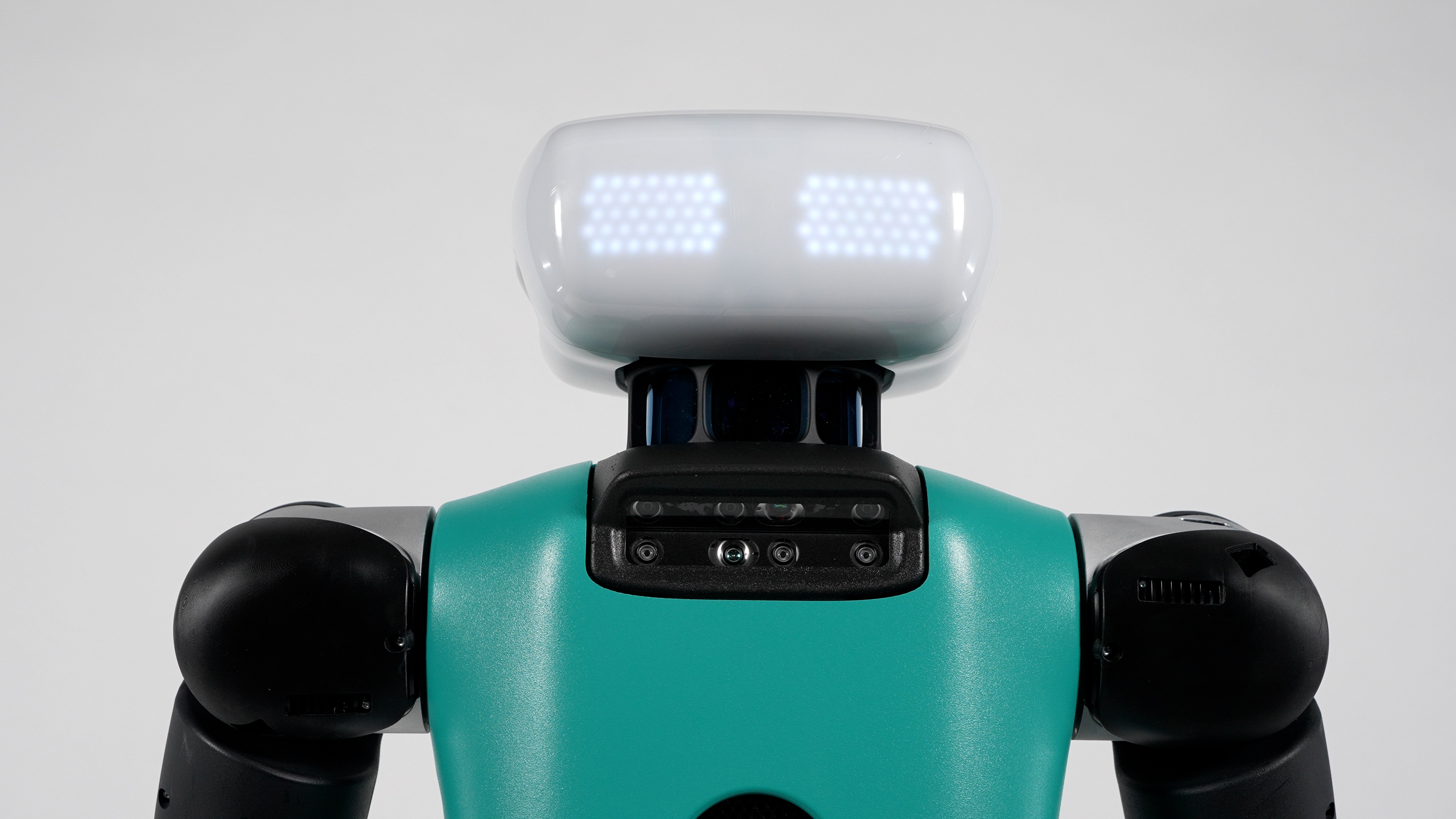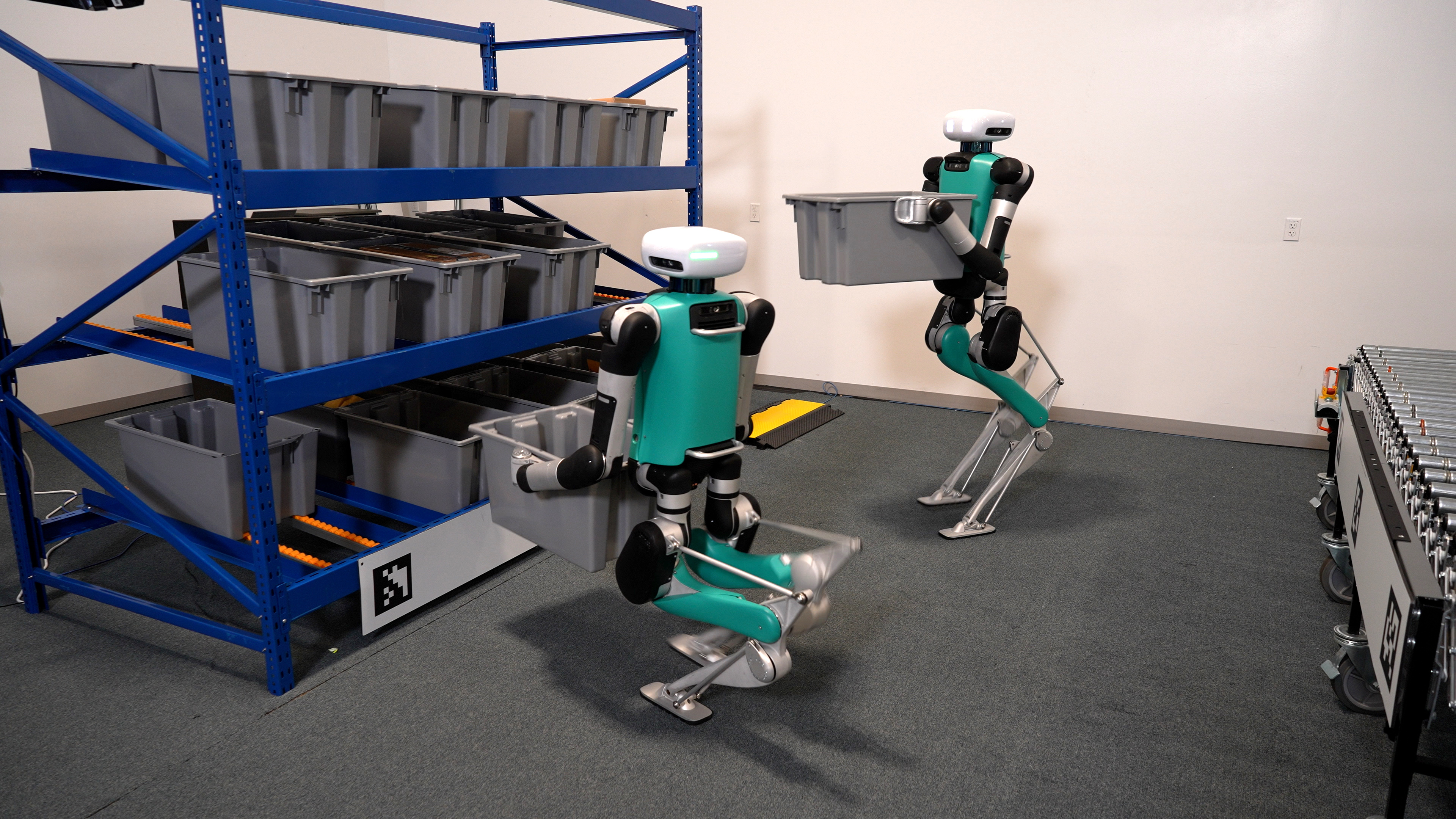Meet the new face of Agility Robotics’ Digit
There’s a broad range of thought on robot faces. It’s a surprisingly difficult aspect to get right for some very good reasons. For one thing, we’re hardwired to recognize and intuit faces, so small changes make big differences.
For another, effectively they’re a window toward understanding a person or animal’s mood, feelings, intentions, etc. Make them too simple and you lose a lot of important nuance. If they’re too complex and lifelike, however, you’ve just punched a one-way ticket to uncanny valley.

Image Credits: Agility Robotics
Once you begin to understand these sorts of things, it’s clear why a lot of companies have spent a lot of money consulting behavioral scientists and employing animators from places like Pixar and DreamWorks. There are several studies out there investigating the science behind robot faces and what varieties are best suited for which job. They’re super interesting. I recommend reading a couple.
It’s also clear why Agility created a face for the 2.0 version of its digit robot. I look at a lot of robots. It’s a fun bit of the job description. I’ve seen all sorts of different varieties and it takes a lot to creep me out (though it’s absolutely still possible), but I’m sympathetic to that visceral reaction upon seeing a headless robot walking around. I suspect that both the original Digit and its predecessor Cassie both elicited their fair share of comments over the years.
Digit 2.0 arrives at ProMat this week with a minimalist head. It’s a shiny, white oblong structure with sensors on the sides, a pair of large, blinking LED eyes on the front and a third light on the rear. In the absence of a soul, eyes are the gateway to the face, and in the case of a big, heavy robot with potentially limitless mobility, they offer insight (along with body language) about the system’s direction and intention.

Image Credits: Agility Robotics
“Digit also has a new head with LED animated eyes, which allow for HRI improvements such as using simple expressions to convey information and intent,” a rep for the company tells TechCrunch. “For example, the new Digit uses straightforward body language and eye movement to indicate which direction it is about to turn.”
The other big functional aesthetic change here is the addition of “end efforts” — simple hands, effectively. These are designed to afford a improved interaction with warehouse tools like bins. An improvement, certainly, from the original Digit’s nubs. Hands are hard, especially when making them scalable, dexterous and rugged enough to stand up to the day to day.
The company is also using ProMat to open access to the Agility Partner Program (APP), which is designed to give customers — both current and future — impact on the robot’s development, going forward. It will also move them to the front of the line when the product goes on sale. Those first beta robots are expected to arrive early next year, with more general availability following. Agility has yet to reveal pricing.


